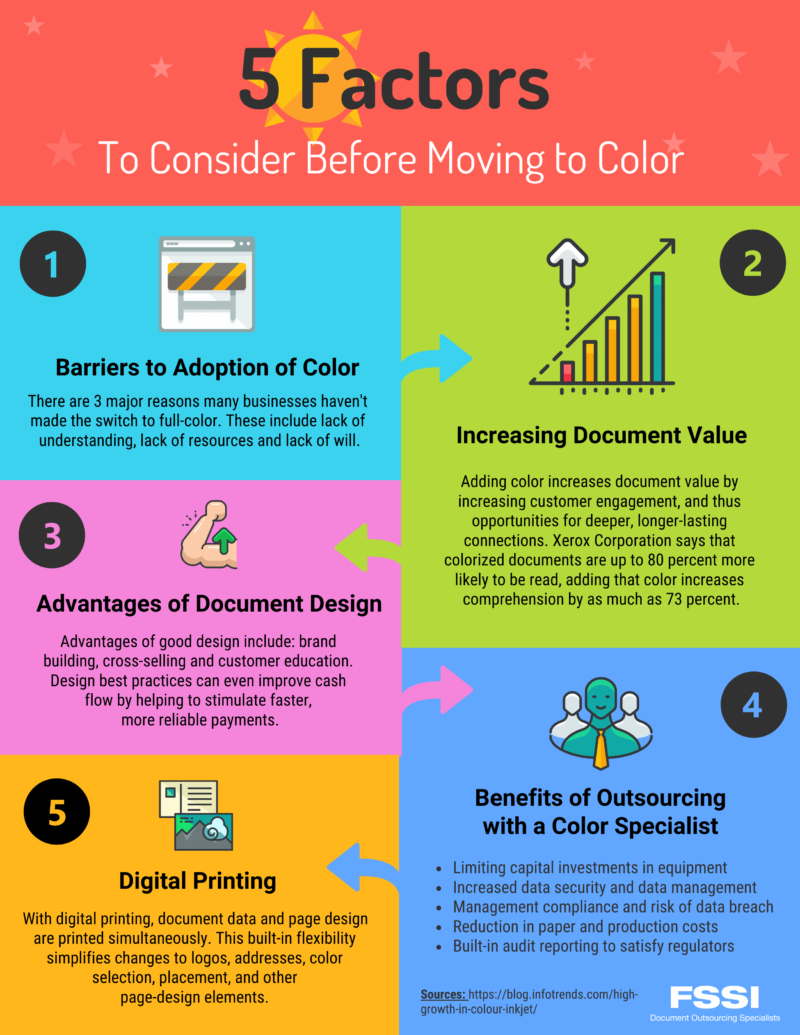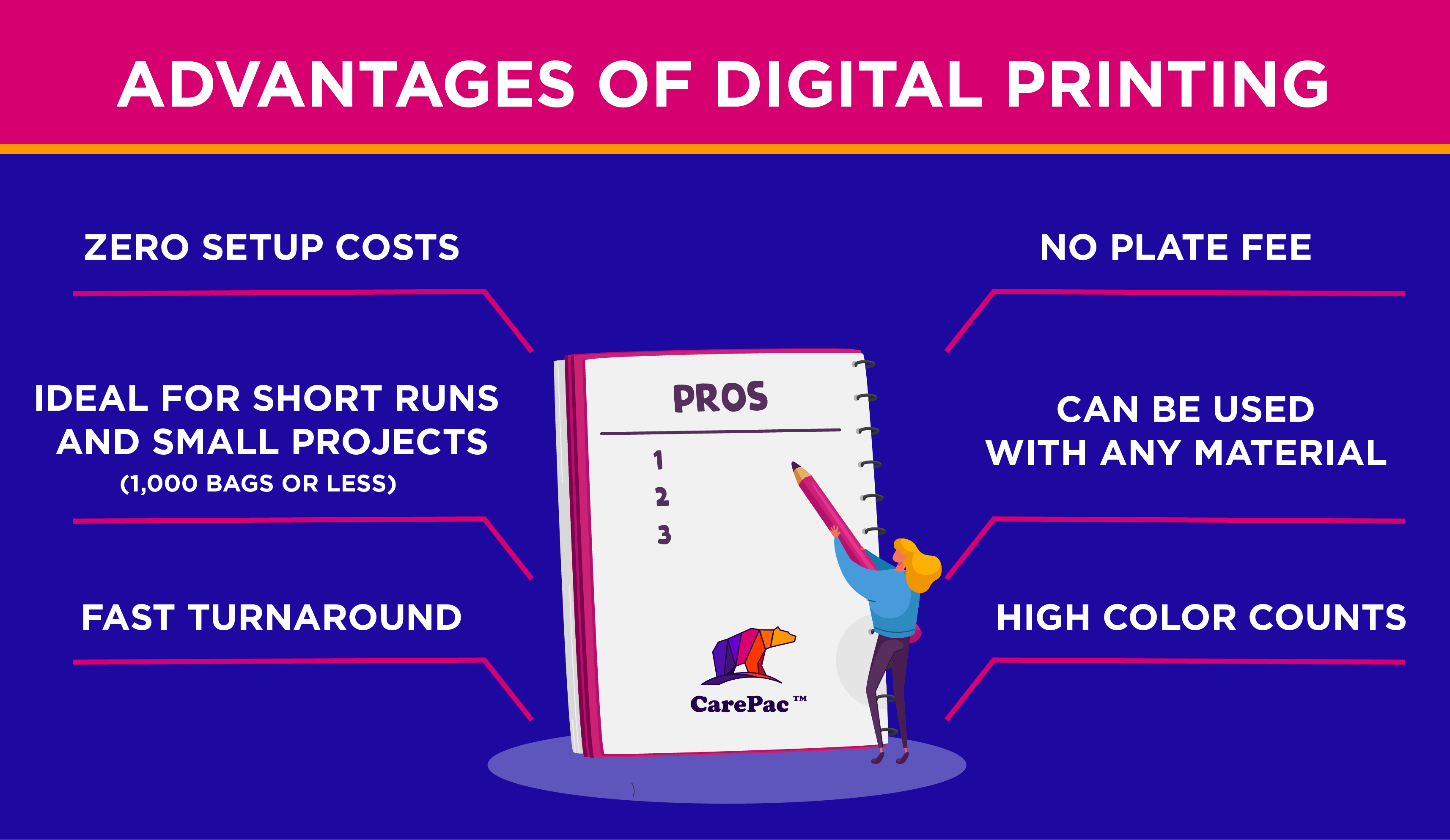5 Easy Facts About Digital Printing Described
5 Easy Facts About Digital Printing Described
Blog Article
The Only Guide to Digital Printing
Table of Contents9 Easy Facts About Digital Printing ShownThe Facts About Digital Printing UncoveredThe smart Trick of Digital Printing That Nobody is DiscussingGetting My Digital Printing To WorkThe Definitive Guide for Digital PrintingDigital Printing Can Be Fun For Everyone
Variable data printing, such as straight mail with personalized codes and addresses, is preferably suited for electronic printing. Digital quick printing only requires 4 steps of design, evaluation, printing and binding to get every little thing done. Digital fast printing has an unequaled benefit: print on need.According to PMMI, digital printing enables brand names and manufacturers to respond promptly to customer needs while improving the supply chain, reducing warehousing cost and waste, and appreciating faster time to market. That all sounds great, but just how does this innovation do all that? The significant differentiator of these technologies is that there are no set-up fees and no plates with digital printing.
Digital Printing - The Facts
According to Wikipedia, the best difference between digital printing and conventional methods such as lithography, flexography, gravure, or letterpress - Digital Printing is that there is no requirement to change printing plates in electronic printing, whereas in these analog printing approaches the plates are continuously replaced. This causes quicker turnaround time and lowers expense when using digital printing.
Fast production means getting your item to market quicker. It likewise suggests it's less complicated and faster to make modifications later, when you change a recipe, include a SKU, or develop seasonal packaging. Digital printing is extremely versatile, so it's easy to make modifications to the plan layout rapidly. It all goes back to the plates.
With traditional printing techniques, short-run printing is just not feasible. Since a great layout can make or damage your item, electronic printing consistently produces top notch, clear and vivid graphics each time.
Digital printing is the procedure of printing digital-based pictures directly onto a selection of media substratums. There is no need for a printing plate, unlike with countered printing. Digital files such as PDFs or desktop posting data can be sent straight to the electronic printing machine to print theoretically, picture paper, canvas, fabric, synthetics, cardstock and various other substrates.
Digital Printing Can Be Fun For Anyone
According to PMMI, digital printing permits brands and makers to react swiftly to consumer demands while enhancing the supply chain, lowering warehousing cost and waste, and enjoying faster time to market. That all noises fantastic, however just how does this modern technology do all that? The major differentiator of these innovations is that there are no set up fees and no plates with electronic printing.
According to Wikipedia, the best distinction in between electronic printing and traditional techniques such as lithography, flexography, gravure, or letterpress is that there is no demand to change printing plates in electronic printing, whereas in these analog printing methods the plates are continuously changed. This causes quicker turn-around time and decreases price when using electronic printing.

Getting My Digital Printing To Work
Much more inventory can suggest even more waste down the roadway. With standard printing approaches, short-run printing our website is simply not feasible. Since a wonderful design can make or damage your item, digital printing constantly develops high-grade, clear and vivid graphics each time. Digital printing on versatile pouches includes the intense, lively, and accurate graphics that practically bid customers to reach out and touch them.

According to PMMI, electronic printing permits brand names and makers to respond quickly to consumer needs while enhancing the supply chain, decreasing warehousing expense and waste, and appreciating faster time to market. That all noises excellent, however how does this modern technology do all that? The major differentiator of these technologies is that there are no set up charges and no plates with digital printing.
The 9-Minute Rule for Digital Printing
According to Wikipedia, the biggest difference between digital printing and traditional methods such as lithography, flexography, gravure, or letterpress is that there is no demand to replace printing plates find out this here in electronic printing, whereas in these analog printing techniques home plates are continuously replaced. This results in quicker turnaround time and lowers expense when utilizing electronic printing.
Quick production indicates obtaining your product to market quicker. It likewise indicates it's less complicated and faster to make adjustments later on, when you alter a dish, add a SKU, or create seasonal packaging. Digital printing is extremely adaptable, so it's easy to make modifications to the package style quickly. Everything returns to home plates.

Digital Printing Things To Know Before You Buy
Digital printing is the process of printing digital-based images directly onto a variety of media substratums. There is no demand for a printing plate, unlike with balanced out printing. Digital files such as PDFs or desktop posting files can be sent straight to the electronic printing press to print theoretically, image paper, canvas, textile, synthetics, cardstock and other substratums.
Report this page